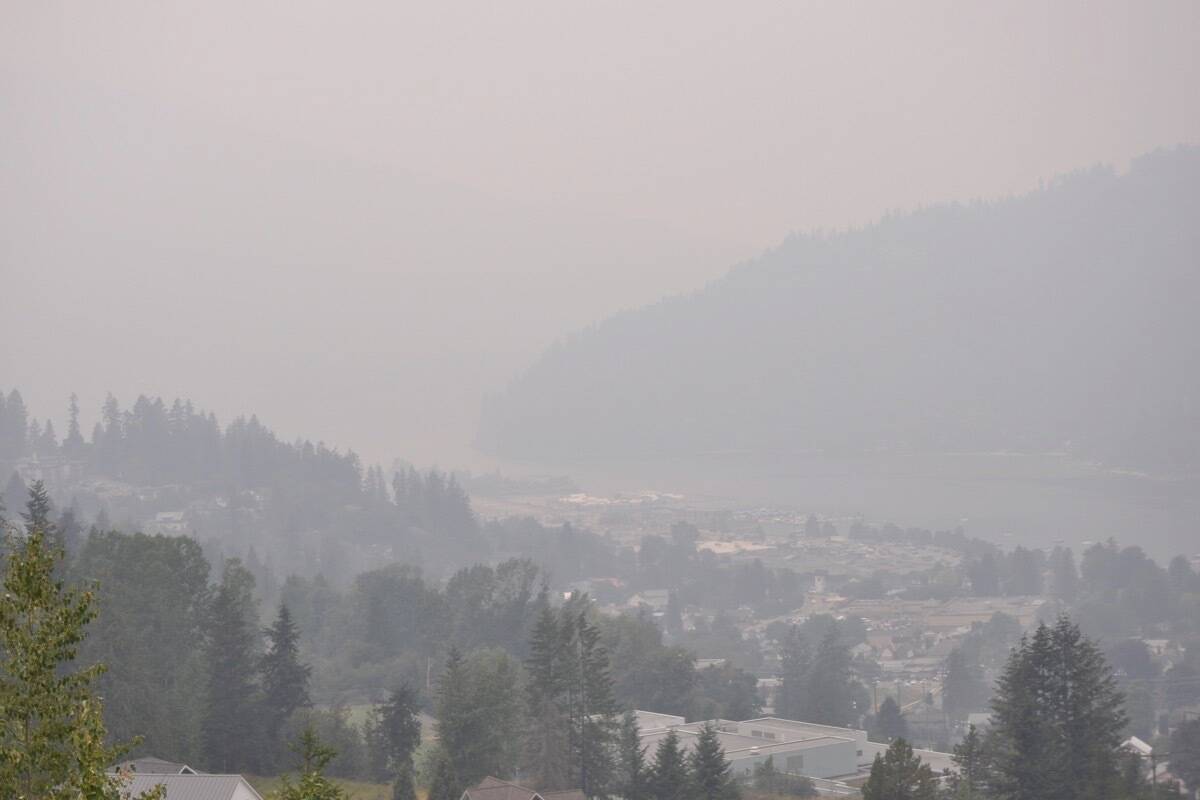Creston and Nelson’s air quality is the worst in British Columbia, according to a world air quality monitor.
As of 1 p.m. on Sept. 12, IQAir rated Creston’s air as the most polluted in B.C. with an air quality index (U.S. AQI) score of 307, followed by Nelson at 206. The air in both cities are categorized by IQAir as “very unhealthy.”
The provincial environment ministry, based on data from its weather station in Castlegar, rates the air quality at seven out of 10, or “high risk” and predicts the rating to drop to “moderate risk” later in the week.
The ministry recommends that people at risk should “reduce or reschedule strenuous activities outdoors. Children and the elderly should also take it easy.”
The general population “should consider or rescheduling strenuous activities outdoors if you experience symptoms such as coughing and throat irritation.”
Gavin King, an air quality meteorologist with the ministry says the increased smoke across the Kootenays is because of a change in winds. Last week, there were outflow winds from the northeast toward the coast. This week the winds have changed direction and are moving very slowly.
“This means all that smoke that was blown out, is now coming back in,” King says.
We are getting smoke from fires west and south of us, he says, including smoke from fires in Washington and Oregon, as well as smoke produced here in the Kootenays by fires at Briggs Creek, Monument Creek and Fry Creek.
Across B.C. on Sept. 12 there were 191 wildfires actively burning: 66 in the southeast, 42 in the coastal area, 34 are around Prince George, 31 are in the Kamloops area, 12 are in the northwest and seven are in the Cariboo region. The majority (85 per cent) are believed to have been started by lightning.
READ MORE:
• Much of B.C. under air quality advisory as wildfires force evacuations, spread smoke
• Experts offer tips to stay safe amid wildfire smoke across B.C.
bill.metcalfe@nelsonstar.com
Like us on Facebook and follow us on Twitter

